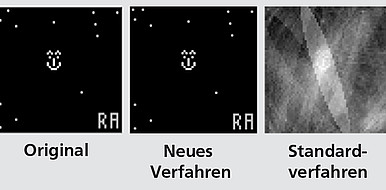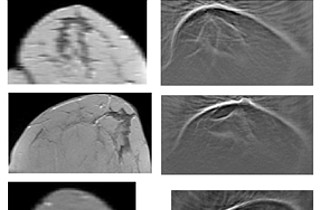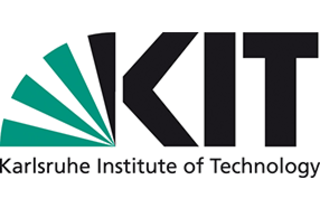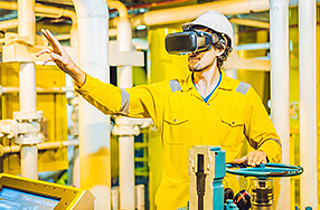Image generation for tomographic processes
Tomography determines the three-dimensional inner structure of a body by exposure to radiation, and displays it as a sectional view. Computerized X-ray tomography (CT), magnetic resonance tomography (MRT), and ultrasound computerized tomography are the best known procedures.
State of the art
In the classical procedures, images of a specimen are produced from various perspectives and superimposed by addition in such a way that a two- or three-dimensional image of the inner structures can be obtained. However, scatter and reflection signals are processed as noise, which disturbs the image and will lead to inferior quality of the results. Another disadvantage is the enormous number of source images needed for one reconstruction. They add to the time and, consequently, also to the costs of imaging.
Technology
The Institute of Data Processing and Electronics (IBE) has developed a method of reconstructing images from reflection and scatter signals which produces higher-grade results from considerably fewer image data. This new process does not add the data, but computes the result by way of boundary conditions. The measured data as collected can be used to process not only straight-through beams but also reflections and scatter. From these data, such additional information is obtained as the rates of propagation and the absorptions in the materials under study, which is included in the computation by way of mathematical equations. The result of reconstruction are sharply defined structural images which do not need to be post-processed expensively, for instance by filtering.
Advantages
The procedure is a factor of ten faster in data acquisition, which not only reduces costs per measurement but also decreases the radiation exposure of the specimen. The results of reconstruction generate visibly better imaging results, which can be used in materials testing and in medical diagnosis.
Options for companies
The KIT is looking for partners for industrial uses of the process.
Your contact person for this offer
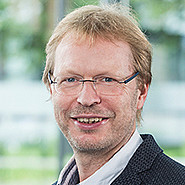
Innovation Manager Karlsruhe Institute of Technology (KIT)
Innovation and Relations Management (IRM) Phone: +49 721 608-25587
Email: rainer.koerber@kit.edu

